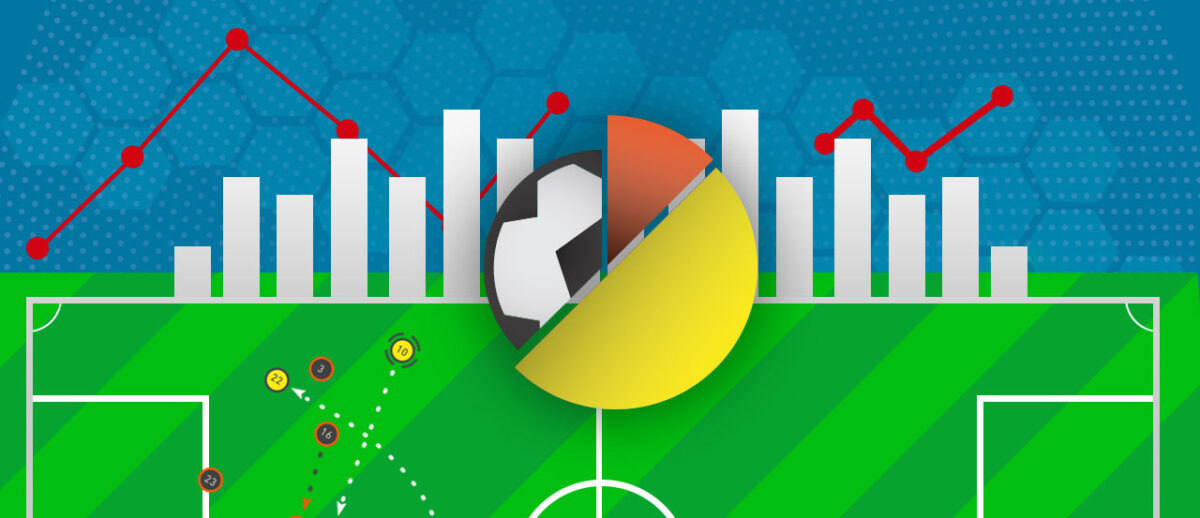On football shows such as Match of the Day, well-known pundits commonly let their sentiments be heard on the recent performances of certain players and clubs. After all, who doesn’t love to tune in on Jamie Carragher and Phil Neville arguing over Manchester United’s loss of form? While much of what is said about a player’s performance is an opinion, these accusations as well as glorifications are almost always supported by data, presented in the form of statistics. It is no surprise that data collected on a player’s total distance covered, shot conversion, and pass completion may be used to bolster these arguments, as this has been common throughout the past decade.
Recently, however, the value of data within the context of football has significantly risen, due to developments in deep learning and predictive analytics (Murray & Lacome, 2019). Adapted training sessions, player recruitment, and analysis of the opponent’s playing style are all ways in which clubs’ staff can improve their decision making by leveraging data.
Although from a fan’s perspective most of the football action takes place on game day, according to Murray and Lacome (2019), professional players train at least five days a week. Data is constantly collected on a variety of player metrics, such as running distance and number of accelerations, as well as force load distribution. Trackers that collect this data help prepare the intensity of certain drills. Analyzing the force load distribution, for example, allows coaches to examine which of a player’s muscle groups are weak, and therefore critical decisions can be made leading up to the day of the match.
Furthermore, data collected on a team and its opponents have proven to provide valuable insights. According to Burn-Murdoch (2018), football’s “analytics era” began in 2006, when London-based Opta Sports recorded the time and location of every pass, shot, tackle, and dribble. Today, about 2,000 data points are collected per match (Burn-Murdoch, 2018). This development in data collection has progressed to the point where Premier League shows such as Match of the Day now present viewers with the number of goals they can expect that weekend.
However, arguably the most impressive development in data-driven football, has come from sports scientists that have developed algorithms that predict the likeliness of certain in-game player decisions (Burn-Murdoch, 2018). As shown by the depiction below, machine learning programs are now able to determine player movements and the amount of space a player consequently creates by their positioning on the pitch. This technique, referred to as “ghosting”, has as a result uncovered an otherwise difficult-to-uncover aspect of a player’s skill set, namely creating space, which is an invaluable asset when considering buying a player.
Considering the impact data analytics has already had in the football world within the last decade, who knows which new technological developments will occur in the near future and how they will shape the way decisions are made!
References:
Murray, E. and Lacome, M., 2019. What Difference Can Data Make To A Football Team?. [online] Exasol. Available at: <https://www.exasol.com/en/what-difference-can-data-make-for-a-football-team/> [Accessed 5 October 2020].
Burn-Murdoch, J., 2018. How Data Analysis Helps Football Clubs Make Better Signings. [online] Financial Times. Available at: <https://www.ft.com/content/84aa8b5e-c1a9-11e8-84cd-9e601db069b8> [Accessed 5 October 2020].



Hi Victor,
Great post! Especially as a football fan it was enjoyable to read. The game is indeed totally different than it was one or two decades ago. Statistics play a big role in the decision of buying a player – there is even a tool which predicts what the potential of a certain player is, which can be considered when buying players. As a football fan I think that pundits such as Jamie Carragher and Phil Neville should keep giving their opinions, even when it is not always based on statistics. That’s also what makes it that enjoyable to watch right? However, I think that the development of clubs accessing data about their players is a good one. Not only for the potential level of the game, but mainly for preventing injuries from happening. By discovering weak muscle groups, players could adjust their training schedules to strengthen these weak spots. On the other hand, it is still football, by which I mean that a lot just won’t be predictable. The difference between hitting the post or scoring a goal is small, however, the differences in outcome can be huge.
Hi Victor! A very interesting read on the use of data analytics in football. I agree with you that the use of Data analytics has changed and will continue to change the beautiful sport of football as we know it. Additionally, i think there is another field in football that has been changed drastically by the introduction of data analytics, namely the field of scouting. Using data analytics the clubs and other organizations have been able to build extensive databases filled with data on the most promising young talents. Using techniques like machine learning they are able to predict whether young talents are likely to reach their true potential.
It fascinates me that using data analytics, Leicester City FC was able to sign both N’Golo Kante and Riyad Mahrez, who both played at obscure clubs in the French 2nd league for small fees. Only to sell them for ridiculous profits a couple of years later (not to forget they won Leicester the Premier League as well 😉 ). I’d like to hear your thought on the use of data analytics in the field of scouting!